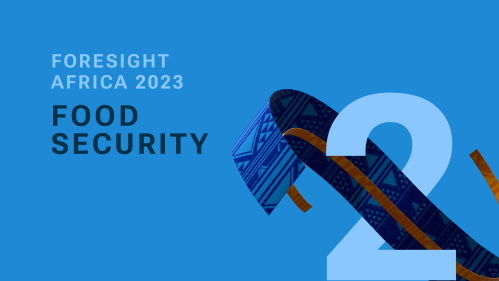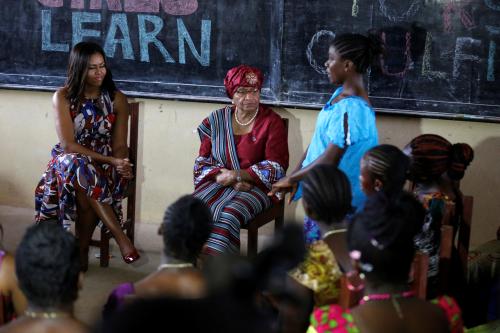Africa’s efforts to feed its school children have been put at risk by the COVID-19 pandemic
At the beginning of 2020, national school feeding programs were delivering school meals to more children than at any time in human history, making school feeding the most extensive social safety net and the largest multidisciplinary and inter-sectoral program in the world. In fact, more than 65 million children received school meals across Africa in 2019, a massive increase from 38.4 million in 2013, according to the latest edition of the African Union Biannual Report on School Feeding in Africa. This success followed more than a decade of sustained growth in such programs, which had begun in Africa in 2003 with the adoption by New Partnership for Africa’s Development (NEPAD) of the home-grown school feeding (HGSF) approach of the Comprehensive Africa Agriculture Development Program (CAADP) and the Malabo Commitments. The HGSF approach was selected by these agencies because it benefits both children and the farming community: It sources food locally which, with appropriate program design and implementation, can help ensure that food is fresh, nutritious, and culturally appropriate, while at the same providing a stable and predictable market for local small farmers, the majority of whom are women. However, by mid-2020, when schools closed worldwide to limit the spread of the COVID-19 pandemic, the 388 million children reached by national programs had fallen by 370 million, such that nearly all the children who had previously benefited from these programs were suddenly deprived of, what had been for many of the most needy children, their one guaranteed nutritious daily meal.
African governments co-create a global coalition to restore school meals by 2023
Among other pressing issues, the COVID-19 pandemic highlighted the importance of school meals in bringing vulnerable children—particularly girls—back into school as well as securing the economic future of their societies. In early 2021, the African Union (AU) called for the creation of a coalition focused on this vision, and this call was the impetus for governments to launch the School Meals Coalition at the United Nations Food Systems Summit in September 2021. The School Meals Coalition aims to restore school meals to 370 million children worldwide by 2023, and, by the end of the decade, reach an additional 73 million children—over 62 million of whom live on the African continent. African governments presented an Africa Position to the Food Systems Summit, and specifically recognized HGSF school meals programs as key game changers that bring children to school, especially girls, and enhance learning, while at the same time stimulating local agricultural markets. To turn ideas into meaningful action, global leaders collectively requested research support to ensure that policymakers and program leaders have access to independent evidence to guide the design, development, and implementation of these school-based programs.
Putting research and evidence at the heart of policymaking
Fifty-nine countries—of which 27 are in Africa—now back the vision of the Coalition, many with specific endorsements from their heads of state. As part of this effort, their first initiative was to establish a Research Consortium for School Health and Nutrition, with a 10-year research agenda specifically intended to oversee research that policymakers need to power up their national school meal programs and ensure their quality, effectiveness, and efficiency. The heads of five U.N. Agencies (WFP, FAO, WHO, UNICEF, and UNESCO) have endorsed cross-sectoral approaches to strengthen school-based health interventions as part of the response for countries to build back better.
Africa is leading the way
Already, African countries are making specific commitments to strengthen their HGSF programs as part of the School Meals Coalition:
- President Patrice Talon of Benin has just announced a national budget commitment of $270 million dollars over the next five years to scale up Benin’s national program.
- President Paul Kagame of Rwanda has committed to scaling up their national school meals program from 640,000 children today to 3.3 million children in two years.
- President Macky Sall of Senegal—the newly appointed chairperson of the African Union—was the first president to personally sign the declaration of commitment of the coalition and has increased his country’s budget for school feeding in 2022.
The African Union, and in particular the AU Development Agency (AUDA-NEPAD), has spearheaded the concept of HGSF, recognizing that linking local farmers and communities with schools is an economically viable and potentially nutrition-friendly approach to strengthen the agriculture sector in Africa. The African Union is publishing their updated guidelines on HGSF on March 1 in honor of Africa Day of School Feeding.
Importantly, the African Union has designated 2022 the “Year of Nutrition,” with a view toward strengthening agricultural food systems to accelerate human, social, and economic capital development, and to accelerate the achievement of the Malabo targets by 2025, the Decade of Action on Nutrition by 2025, and the Sustainable Development Goals by 2030. To make sure these programs are properly monitored and evaluated, the 2021 data from the first AU regional report on HGSF will serve to kick-start the School Meals Coalition Data and Monitoring Initiative, the latest product of the Coalition and the world’s first systematic school health and nutrition database.
Arguably, these collective actions to advance home-grown school feeding are the largest programmatic response to the pandemic in Africa, outside of the vaccination efforts. They have sprung out of the African Union’s commitment to the School Meals Coalition and signal the region’s collective support for the development of the next generation. The AU is now part of a Data and Monitoring Initiative of the School Meals Coalition, led by the World Food Program, that will serve to track progress across the continent as governments build back from the pandemic. More than 60 stakeholders—including U.N. agencies, development partners and non-state actors—have committed to support these government-led efforts. It is vital that this support materializes, and the children of Africa have a real chance to recover and catch up, and do not become long-term victims of the COVID-19 pandemic.








Commentary
Governments across Africa are rebuilding home-grown school feeding (HGSF) programs to help their recovery from the pandemic
February 28, 2022